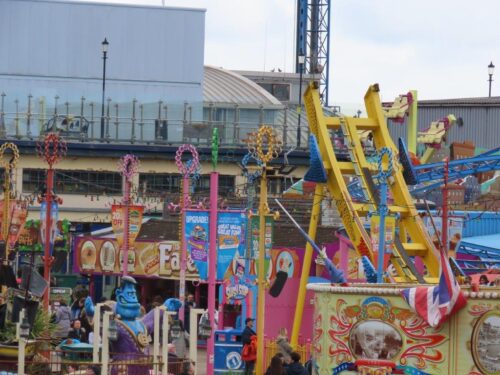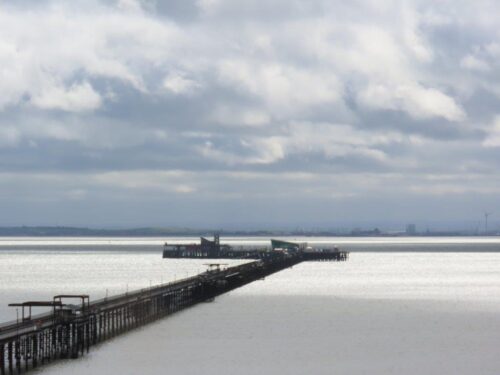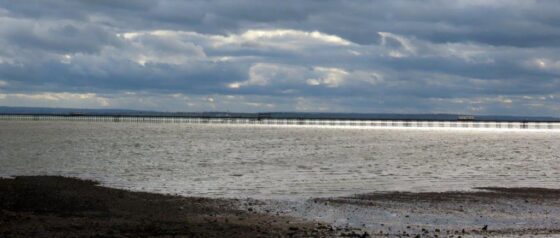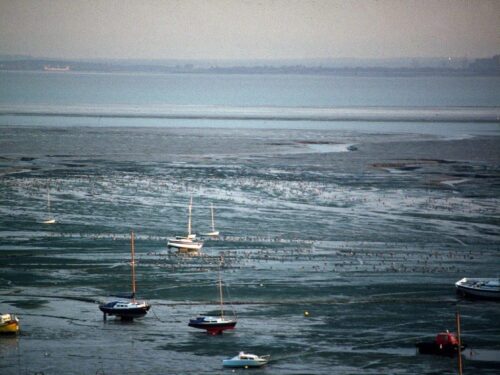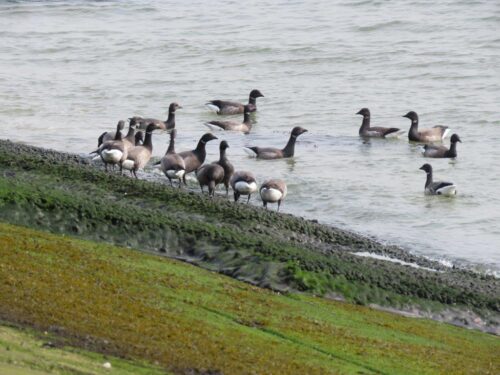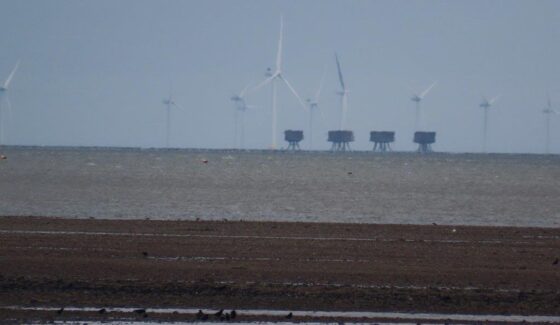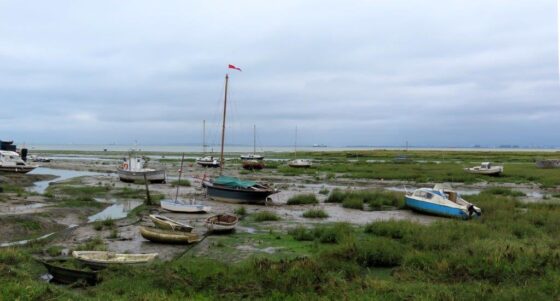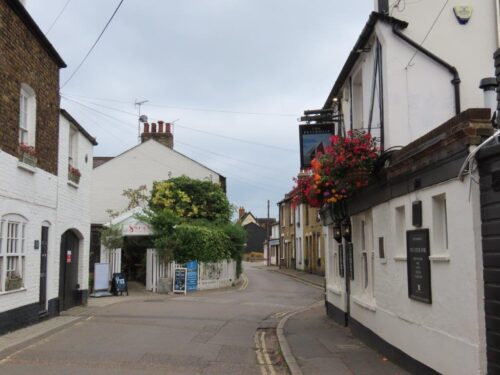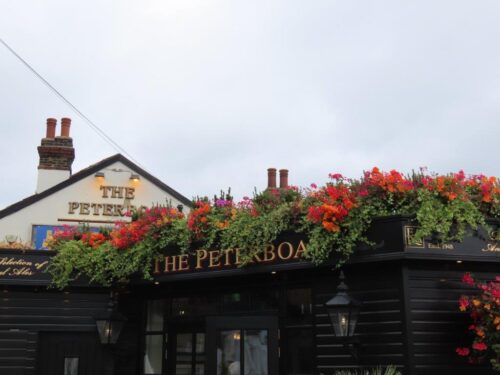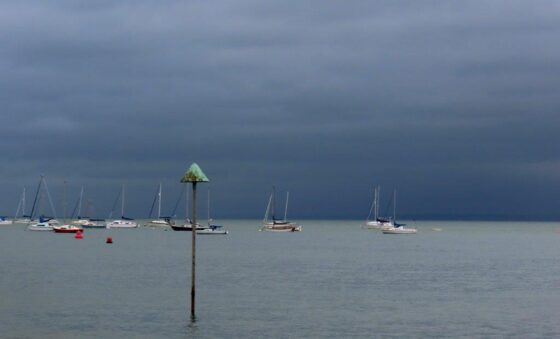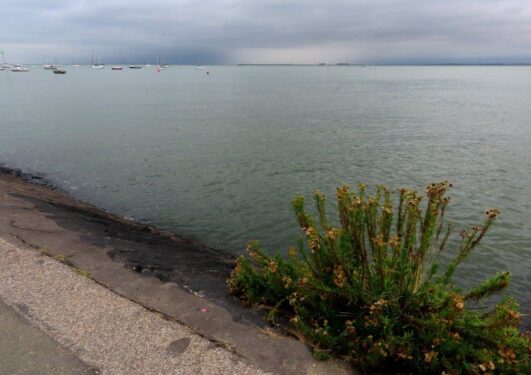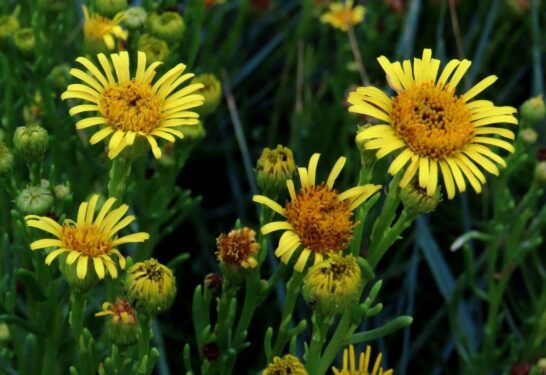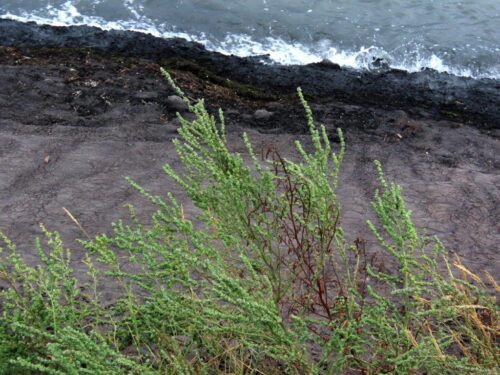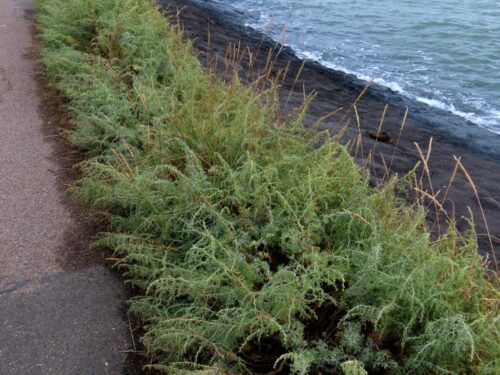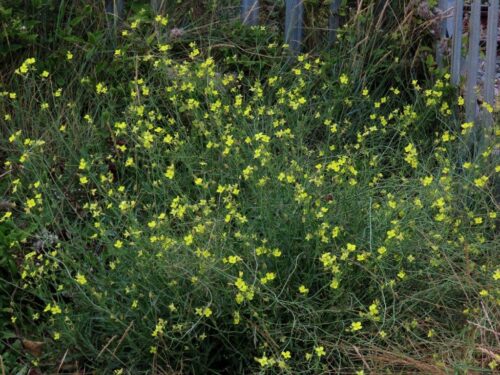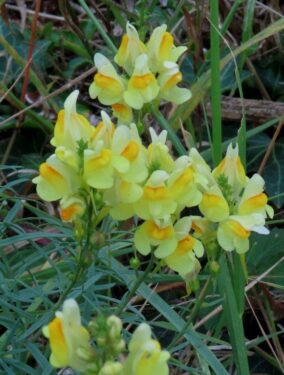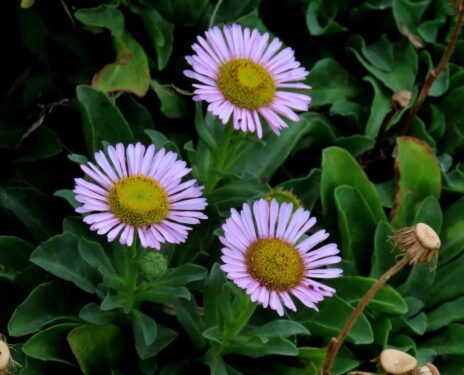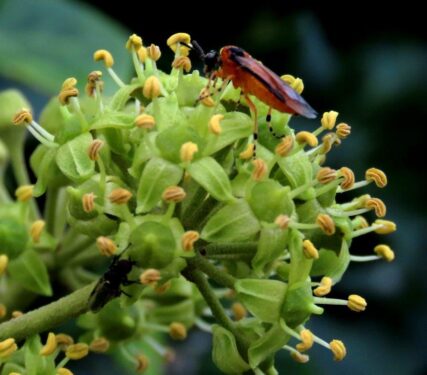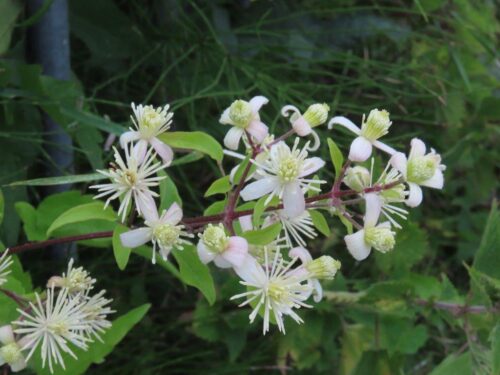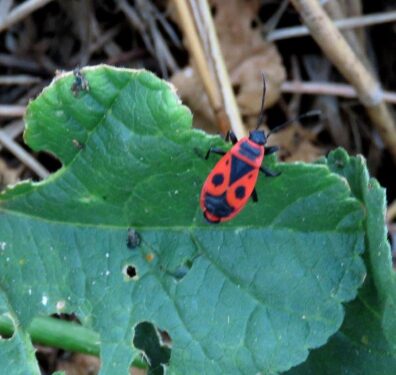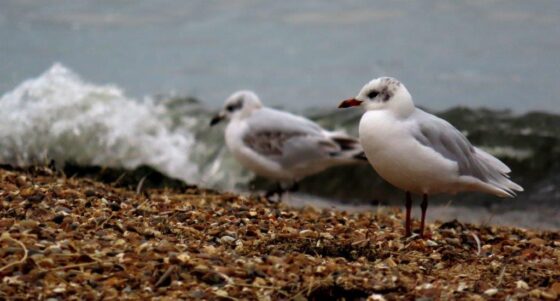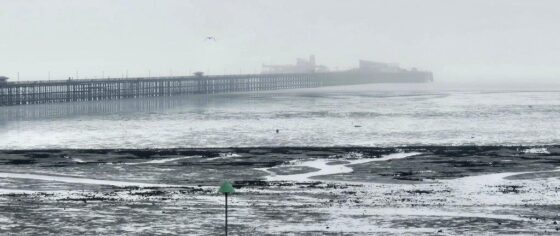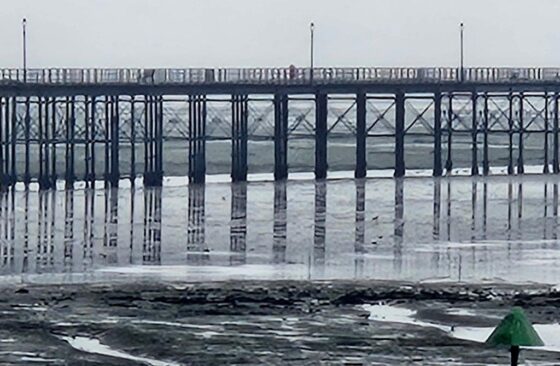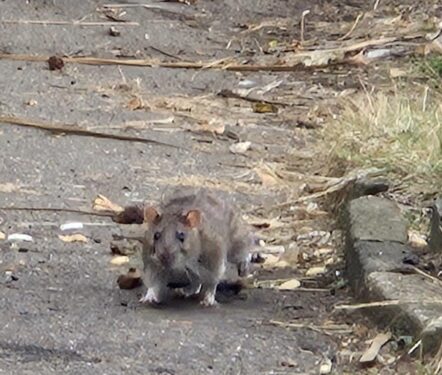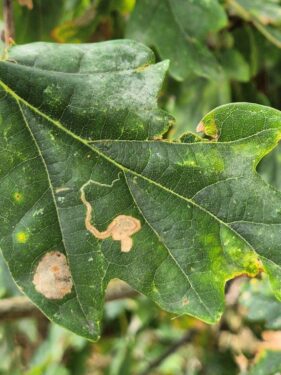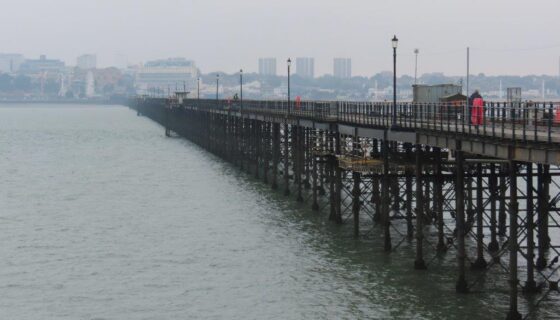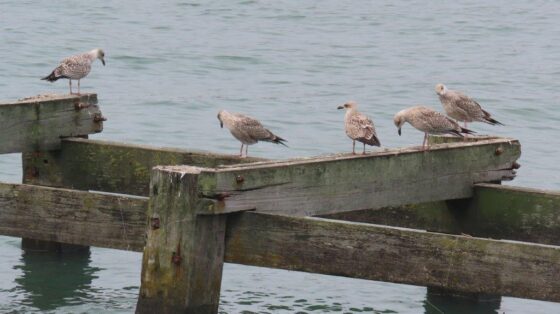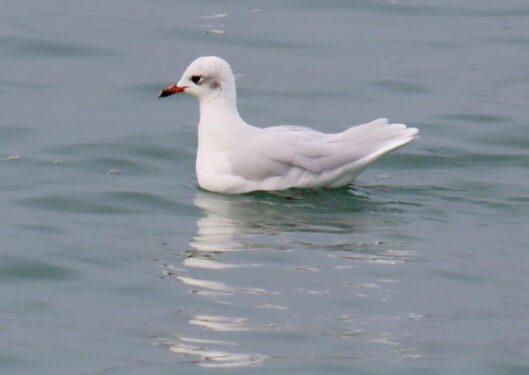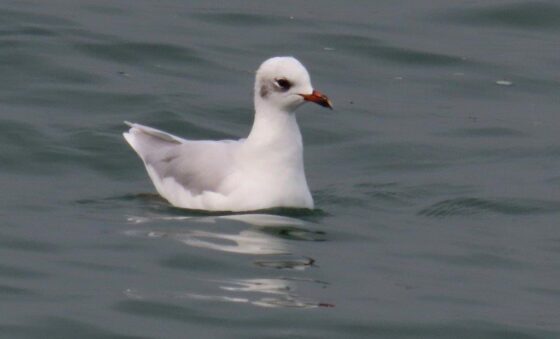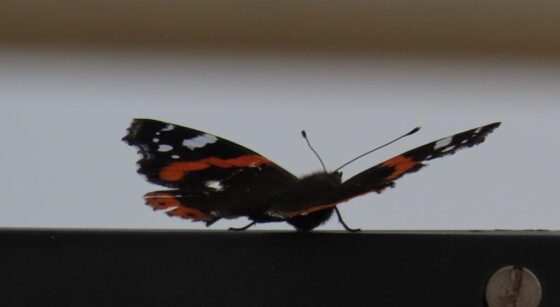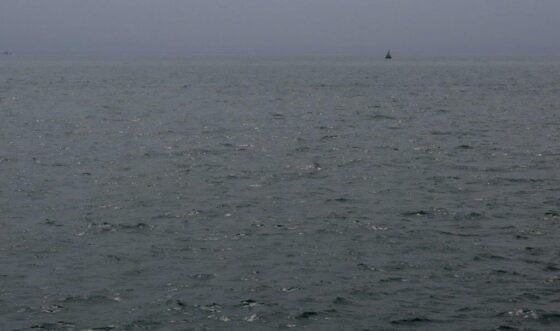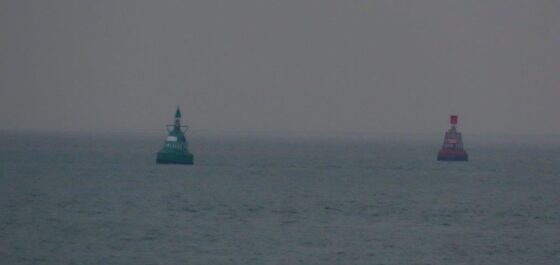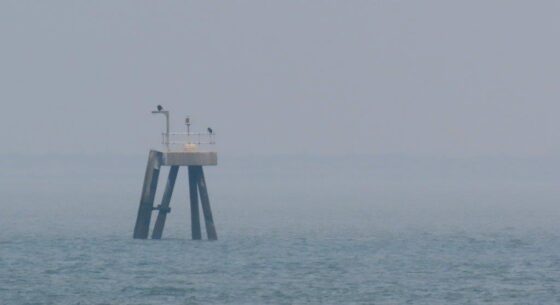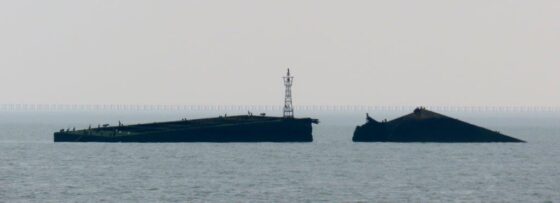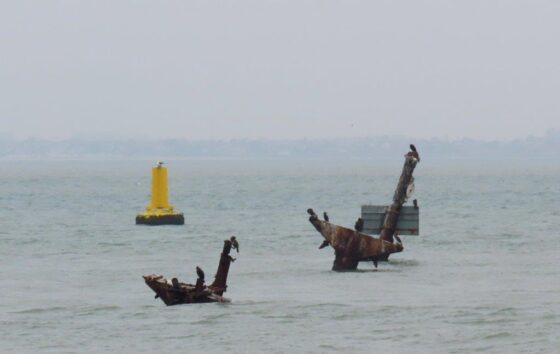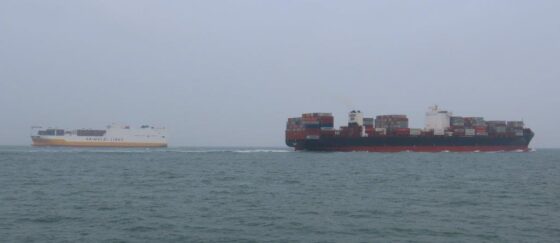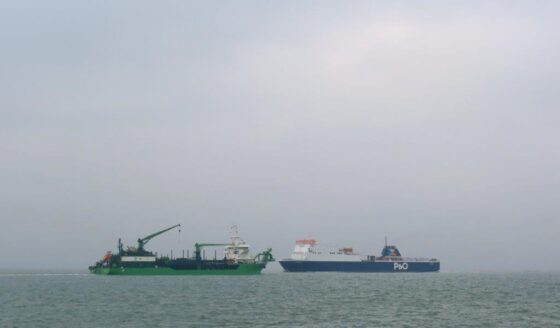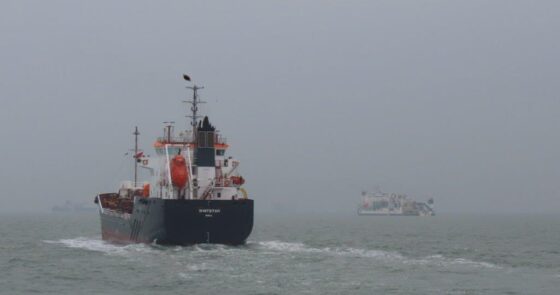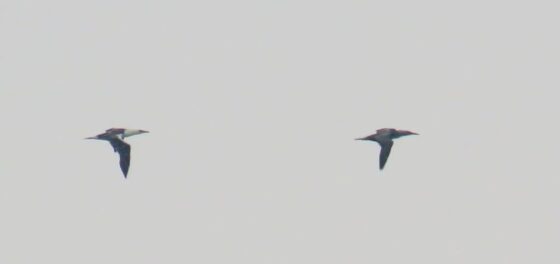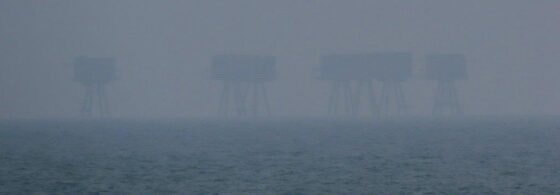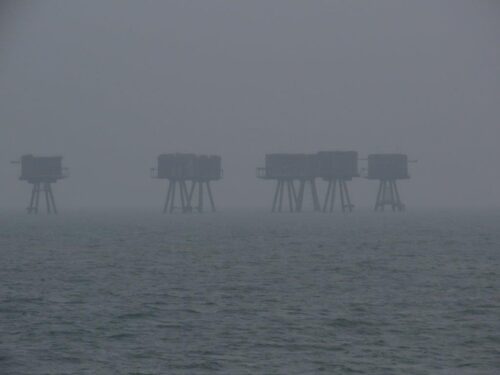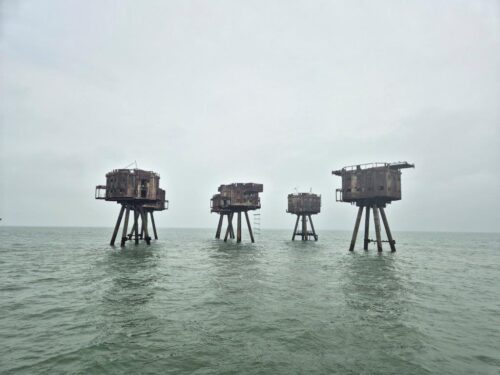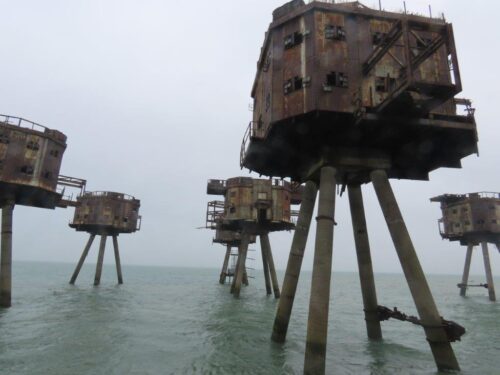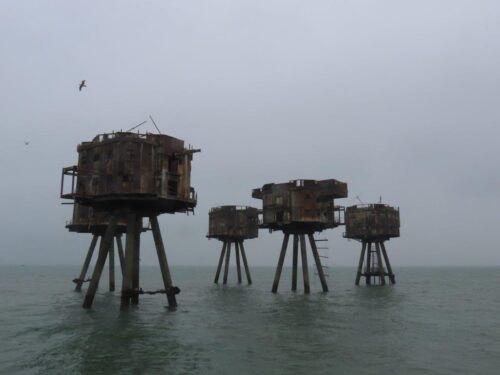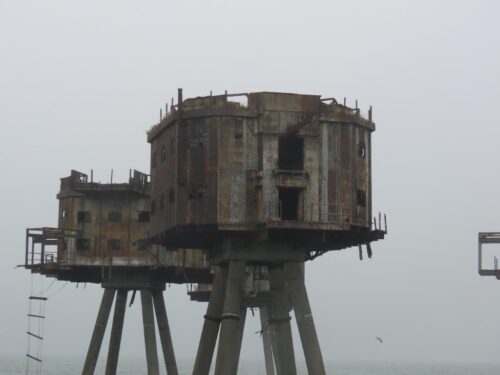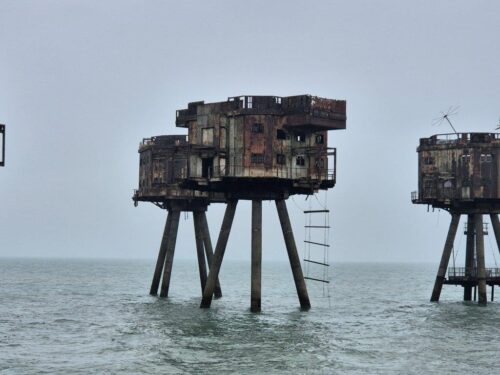It all started in April this year when we took Eleanor away for a night for the second time (the first being Cambridge last summer), this time to Southend-on-Sea. In the event it was very windy and cold so we spent most of our time in the indoor play area of Adventure Island (Eleanor was happy!) but we did take a train ride out to the end of the longest pier in the world.
A confession: although I worked most of my career on the Essex coast, I had never before been to the end of the pier. Perhaps it’s because of my challenging introduction to it, one of the first cases I worked on fresh out of university in 1986. That was a horrendous proposal to claim a vast swathe of land from the mudflats around the pier, creating an artificial island to be clad in hundreds of houses and fringed by a marina. It was a sorry tale of corruption and murky East End money (I was warned to be vigilant for violent reprisals)… Quite an eye opener so early in my career: conservation wasn’t all about fluffy bunnies and beautiful butterflies!
Anyway, once the political corruption was uncovered the development fell apart, and the data gathered by RSPB to help our case gave me all I needed to designate the entirety of Southend frontage as SSSI, Special Protection Area and Ramsar site – a place of national and international importance for overwintering waterbirds. Hitherto the only bit between Shoeburyness and Canvey that had benefited from protection was Leigh National Nature Reserve, centred around the vast Eel-grass beds off Two Tree Island and Leigh, justifiably famed for its Brent Geese.
So when I finally got to the end of the pier nearly 40 years later it was with fresh eyes, upriver to London Gateway (another big case I worked on), landward, Kentward and seaward, where we saw the Red Sands forts hovering enticingly on the horizon in front of the giant wind turbines of London Array some 3km beyond.
The Maunsell forts, built as defensive gun emplacements in WW2, are still standing proud and rusting, like something from a sci-fi movie. We had seen them and been similarly thrilled by them in the past from Whitstable, visited an exhibition about them, and always fancied a visit up close. Indeed we had booked one ten years ago, but the operator ceased trading. So it was great to find Jetstream tours online, now taking trips out there from Southend Pier. We duly booked for last week, taking the opportunity for another night away in Southend, one holiday triggering another!
Our recent jaunt started at Leigh-on-sea station, heading into the charms of Old Leigh …
And especially the Peterboat Inn, right by the NNR and serving for me the most wonderful tasty and filling clam chowder, served in a cob.
Then it was along the seawall track all the way to the pier, the high tide-line dotted with Golden-samphire, Grass-leaved Orache and Sea Wormwood…
To the landward, there was Perennial Wall-rocket, Common Toadflax and Seaside Daisy, with climbing Ivy covered in insects and scrambling Wild Clematis.
Along the whole of the 5km frontage, wherever there was Common Mallow there were Firebugs, a new arrival in the county (and country) that would not have been here when I first knew it. Nor indeed would have been Mediterranean Gulls, at least in such large numbers…
Next morning dawned misty and threatening rain, although that didn’t deter the local wildlife from making the most of the post-summer holiday human detritus on the cliff slopes. The large oak trees were not, as we normally expect, clothed in galls, perhaps a reflection of the windy conditions overlooking the estuary, although the leaves did show numerous leaf-mines.
Out at the end of the pier, there were spawning groups of Grey Mullet, lots of Herring and Black-headed Gulls, along with more Mediterraneans, and some decent roosting flocks of Turnstones, newly back from the tundra…
But most remarkable was the number of Red Admirals migrating south along the pier, reaching the end and, not able to see the other side, circling round presumably until the migratory urge eventually forced them over. There were hundreds throughout the day, including several way out over the open mouth of the estuary. A similar movement was picked up along the Dutch coast the same day. Remarkable really, especially as these are not the individuals that made the springtime journey here. Not even the parents, but probably the grandparents may have made it here, if indeed they were not ones that survived the winter here as many now do.
So it was off eastwards into the open estuary ,,,
… well, as open an estuary as it can be with all the buoys, beacons and wrecks, and many, many vessels, both trading and (like dredgers and cable-layers) working.
The traffic was heavy and the visibility far from perfect, so perhaps it wasn’t surprising that apart from gulls and Cormorants (and Red Admirals – one photobombing the picture above!), there were rather few seabirds an other marine life. Just a few Gannets passed by, together with Common and Little Terns, a flock of Wigeons and passing overhead a couple of migrating Rock Pipits.
Then after more than an hour of steaming eventually the shape of the forts emerged from the mist. So far out, yet they seemed no nearer than when we had seen them previously from the pier. Perhaps that was a bit of a magnified mirage as can happen over water?
Closer and ever closer we headed, and the details be came clearer …
… until we went right through the array, between the slightly offset searchlight tower and the rest. Remarkable structures, formerly joined by aerial walkways, they are probably now beyond repair and being claimed by rust and gulls. If you want to visit them, and we would thoroughly recommend it, don’t leave it too long!
Round and round we went, seeing the array from every angle, through the watery upwellings of sunken forts, past the potentially explosive wreck of the ‘Liberty Ship’, the SS Richard Montgomery, and back to Southend Pier three hours after our departure. A wonderful day out and a fitting centrepiece to the September leg of our year of monthly delights.

